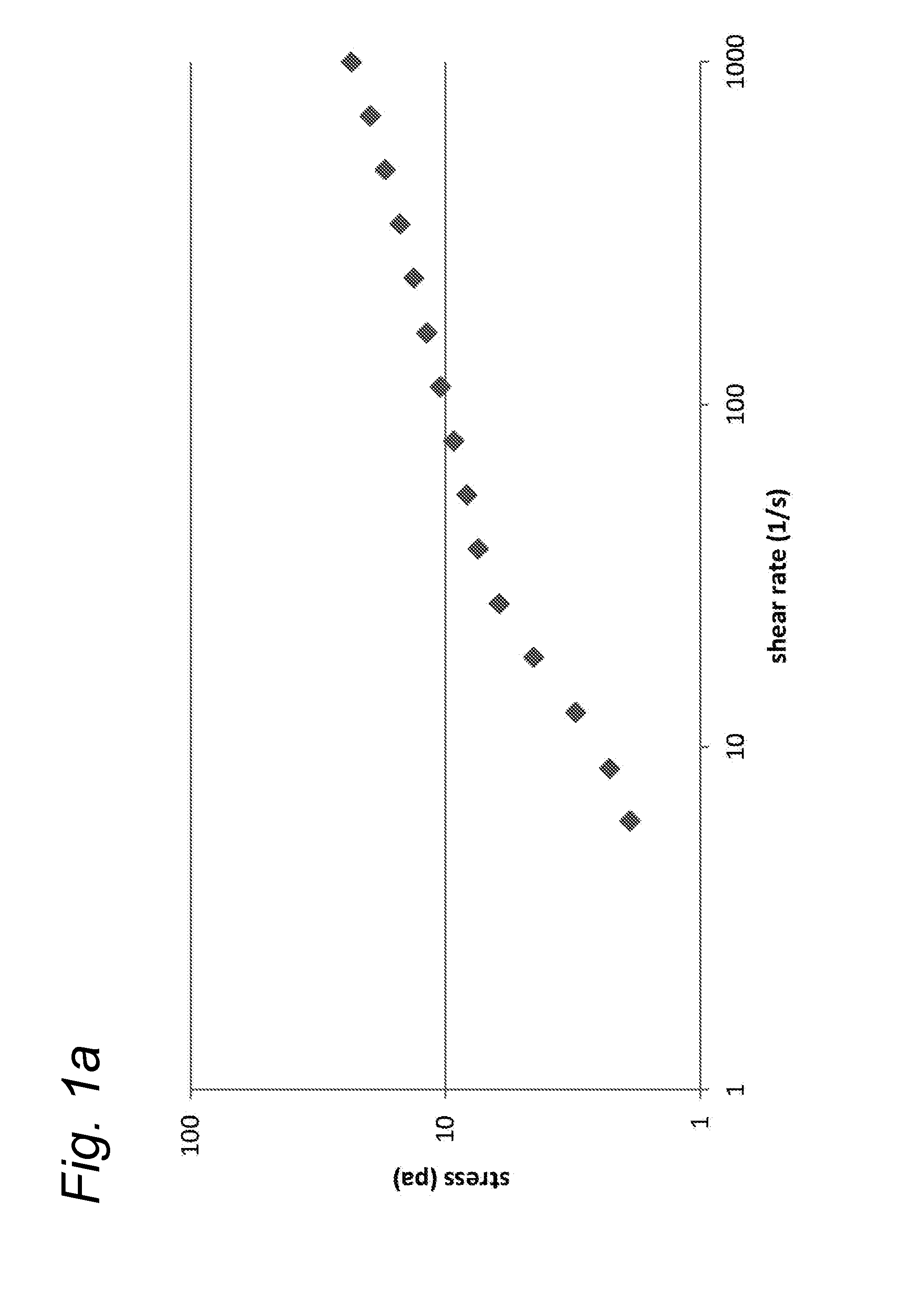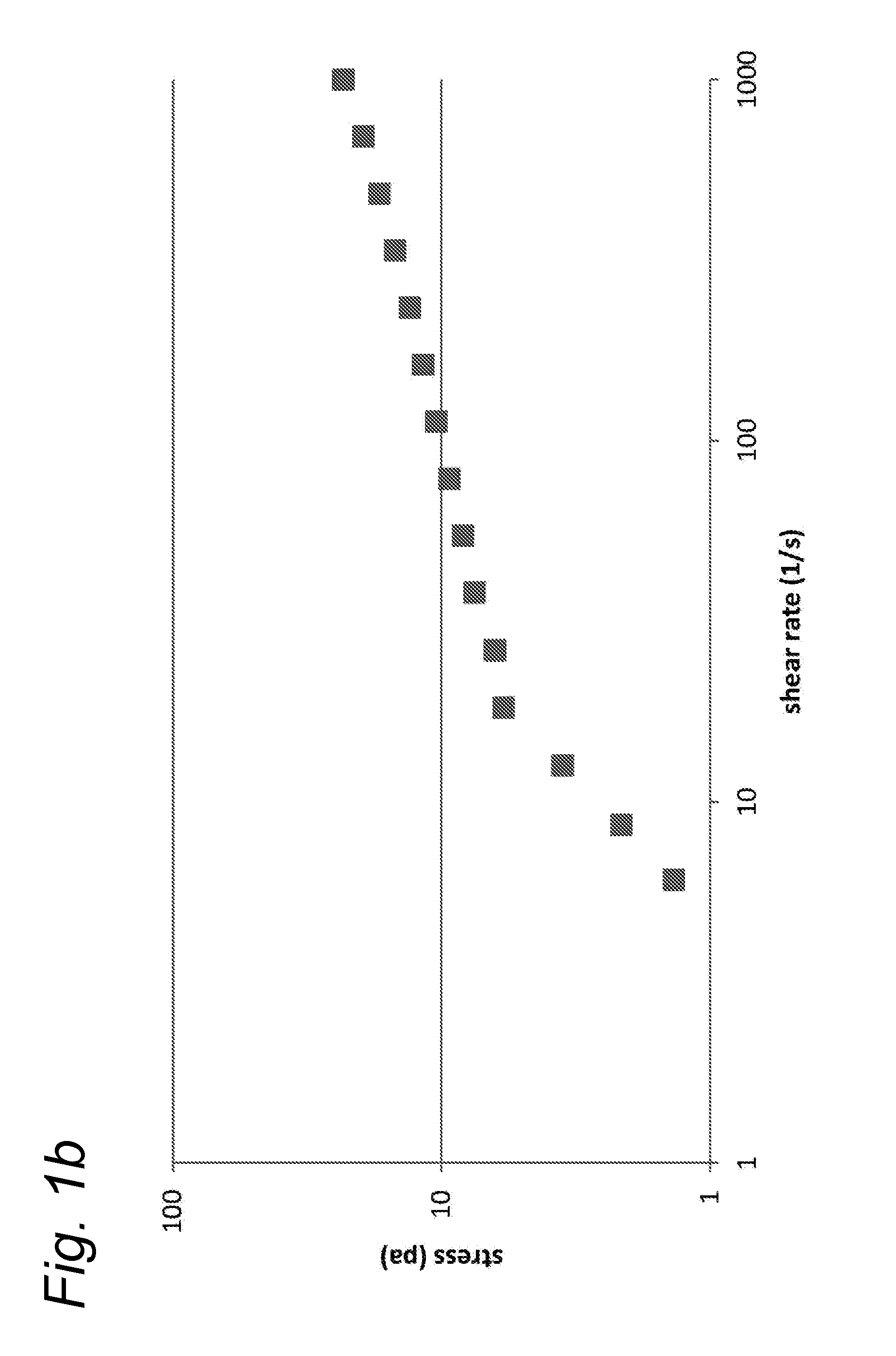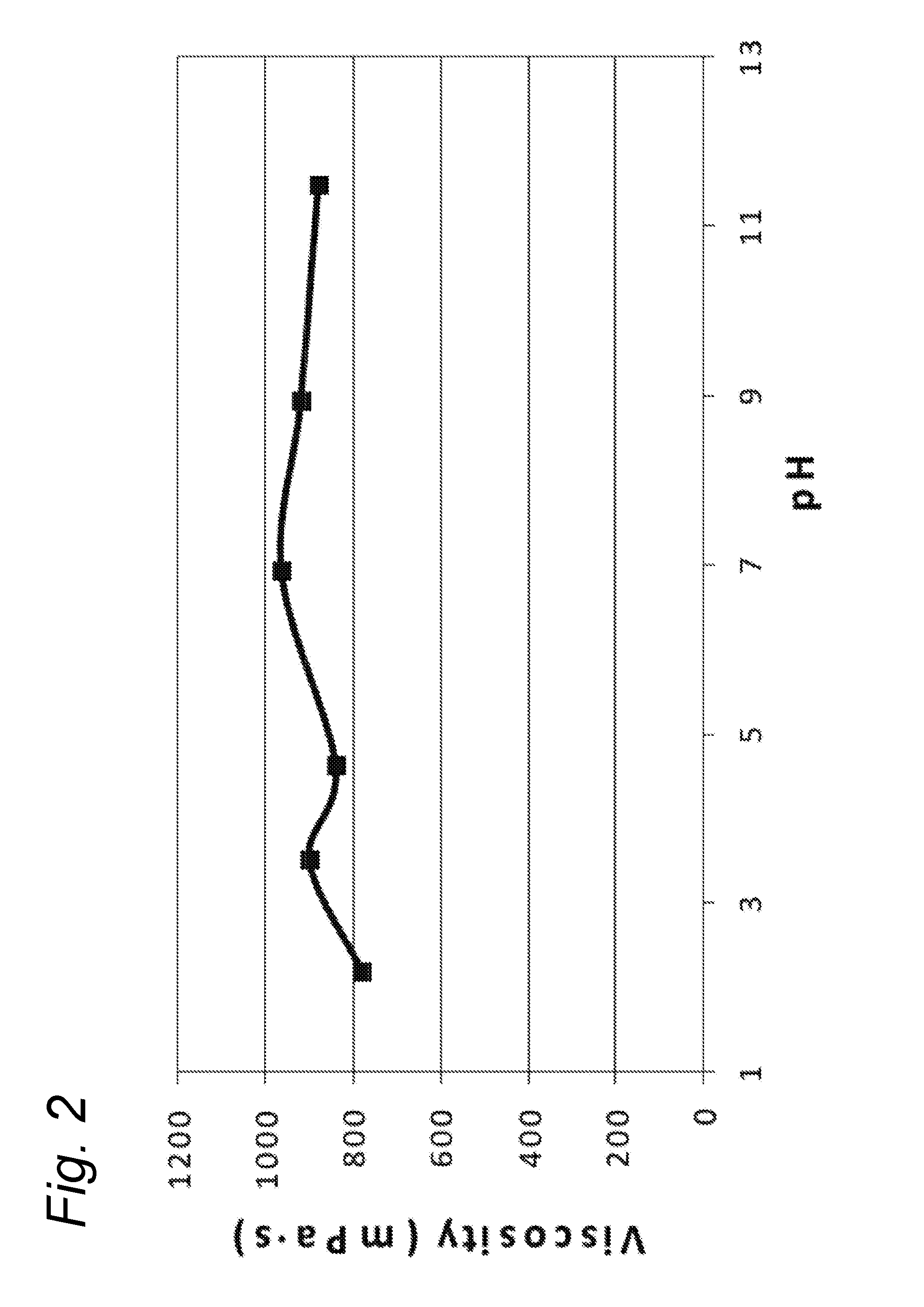Structuring agent for liquid detergent and personal care products
a technology for structuring agents and liquid detergents, applied in the direction of synthetic resin layered products, natural mineral layered products, textiles and paper, etc., can solve the problems of insufficient ability of a certain structuring agent to provide shear thinning capabilities alone, and liquid detergent products present a challenge to formulators, etc., to achieve stable structure, high yield, and high viscosity
- Summary
- Abstract
- Description
- Claims
- Application Information
AI Technical Summary
Benefits of technology
Problems solved by technology
Method used
Image
Examples
examples 1
Preparation of Parenchynal Cellulose Composition Containing Particulate Cellulose Material
[0115]Fresh sugar beet pulp obtained from Suikerunie Dinteloord (NL) was washed in a flotation washer in order to remove sand, pebbles, etc.
[0116]In a stirred tank (working volume 70 L) heated with steam), 16.7 kg of washed sugar beet pulp having a solids content of 15% DS (2.5 kg DS in the batch) was introduced and tap water was added to a total volume of 70 L. The mass was heated with steam and, once the temperature reached 50° C., 1200 gram NaOH is added. Heating was continued to reach a final temperature of 95° C. After 45 minutes at 95° C., the mixture was subjected to low shear for 30 minutes (using a Silverson BX with a slitted screen. After a total period of 3 hours at 95° C., low shear was applied again for 60 minutes (using the Silverson BX with an emulsor screen with apertures of 1.5 mm), during which the temperature was kept at approximately 95° C.
[0117]Reduction of the particles wa...
example 2
Preparation of Parenchynal Cellulose Composition Containing Particulate Cellulose Material
[0121]Fresh sugar beet pulp (320 kg, 24.1% ds) obtained from Suikerunie Dinteloord (NL) was washed in a flotation washer in order to remove sand, pebbles, etc.
[0122]The washed sugar beet pulp was transferred to a stirred tank (1000 L) and diluted to a ds concentration of 8% (800 kg). Multifect pectinase FE (Genencor, 139 units / g ds) was added and the suspension was heated to 45° C. After 48 h the suspension was pressed using a membrane filterpress (TEFSA) and the resulting solid material containing the cellulose material was isolated (216 kg 12% ds).
[0123]A portion of the resulting cellulose material (20 kg) was introduced in a stirred tank (working volume 70 L) and tap water was added to a total volume of 70 L. The mixture was heated to 95° C. and subjected to low shear for a total period of 3 hours at 95° C. (using a Silverson BX with a slitted screen. Then, low shear was applied for a furthe...
example 3
Preparation of ‘MCF’
[0128]A new batch of particulate cellulose material of this invention was produced following the protocol of example 1. This time the end-product was concentrated to 5% dry matter content. This product is denominated ‘MCF’ and was used in all the subsequent experiments, some of which are described here below.
PUM
| Property | Measurement | Unit |
|---|---|---|
| diameter | aaaaa | aaaaa |
| diameter | aaaaa | aaaaa |
| wt. % | aaaaa | aaaaa |
Abstract
Description
Claims
Application Information
 Login to View More
Login to View More - R&D
- Intellectual Property
- Life Sciences
- Materials
- Tech Scout
- Unparalleled Data Quality
- Higher Quality Content
- 60% Fewer Hallucinations
Browse by: Latest US Patents, China's latest patents, Technical Efficacy Thesaurus, Application Domain, Technology Topic, Popular Technical Reports.
© 2025 PatSnap. All rights reserved.Legal|Privacy policy|Modern Slavery Act Transparency Statement|Sitemap|About US| Contact US: help@patsnap.com



